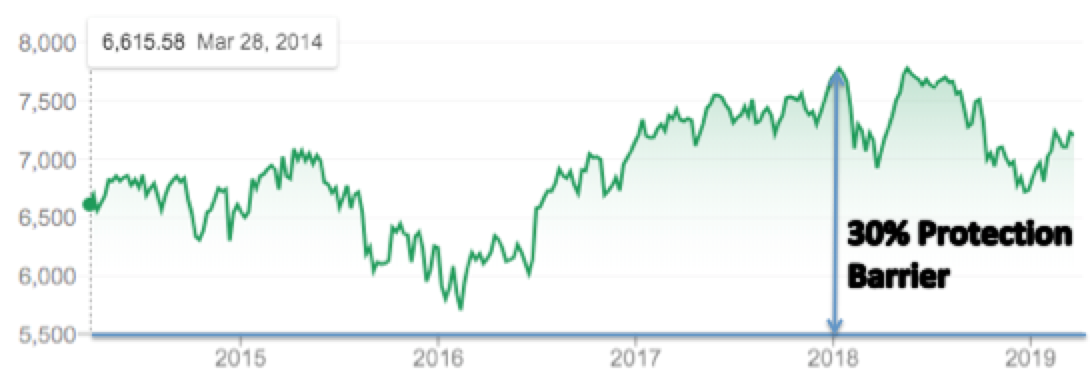What Is A Structured Product?
When considering investing your hard earned capital, we believe it is fair to say we all know diversification is an important strategy, when trying to maximise returns whilst reducing risk. This could include multiple asset classes, currencies and institutions. However, what we have found is that very few investors are aware of, or have utilised structured investments.
So what is a structured investment?
A structured investment is a contract with an issuing bank offering a defined return based on an agreed structure. The majority of such investments generally offer a great deal of downside protection and can deliver a positive return even in a flat or falling market.
Different types of structures
You will find that there are two main types of structured investments and these are either linked directly to stocks or a market index such as the FTSE100.
Stock Linked
Stock related Structured Investments are generally short term investments offering a potentially high return providing the shares they are linked to stay above their agreed protection barriers. Whilst a 50% protection barrier may sound quite secure it is not uncommon for a company to see its share price breach this in the event of a scandal or crisis.. In addition they normally have what is called a “Worst” structure which means you will have a collection of well known stocks and also a much smaller and less known stock that is used to add volatility and increase the annual return. This high risk stock increases the chances of a protection barrier breach significantly.
Index linked Structured Investments in our opinion are a much safer option as they are linked to an index which is a basket of funds within a stock market such as the FTSE100. This increases diversification and therefore decreases the investors risk. In addition they tend to have a five to six year notional terms and this allows time for recovery should there be a prolonged market correction.
Which Type Do We Recommend?
From our experience we would recommend that you only entertain structured investments that are linked to indices and not directly to stocks. Also avoid 12 month terms in favour of using 60 or 72 month terms. Whilst avoiding direct stocks may limit your annual return it will also limit your risk significantly. In addition, whilst a short term investment may seem appealing, if there is a significant market correction, you could be forced to take a loss on your investment due to the maturity date. Having a 5-6 year time horizon allows you to factor in more protection as you are not forced to sell your investment in a short period of time.

The above picture shows the performance of the FTSE100 for the past 5 years and even with a modest protection barrier of 30%, you can see that even from its highest value in 2018 the barrier was not breached. In this example the investor would have received all of their coupons/returns each and every year and 100% of their initial investment at maturity.
Making sense of the jargon
Protection Barrier – This is the amount of capital protection that has been factored into the contract. In the above example the fact sheet would have displayed a 70% protection barrier, allowing for a 30% market correction.
Coupon Barrier – This is the level the linked stocks or indices need to be above in order for the investor to receive their coupon.
Coupon – The term coupon refers to the quarterly, semi annual or annual return the investor will receive providing the linked stocks or indices are above the coupon barrier.
Observation Dates – These are the dates that the structured investment will potentially pay the investor their defined return. These can be quarterly, semi annual or annual.
Strike Date – This is the date that the structured investment will go live and also record the levels of the stocks or indices.
Early Kick Out Trigger – In most cases this is 100%. This means that in order for the structured investment to mature early, the linked stocks or indices need to be at or above 100% of their initial level.
Find out more
If you wish to find out more information about structured investments and would like to find out if they could add value to your portfolio, please do feel free to contact our team.





